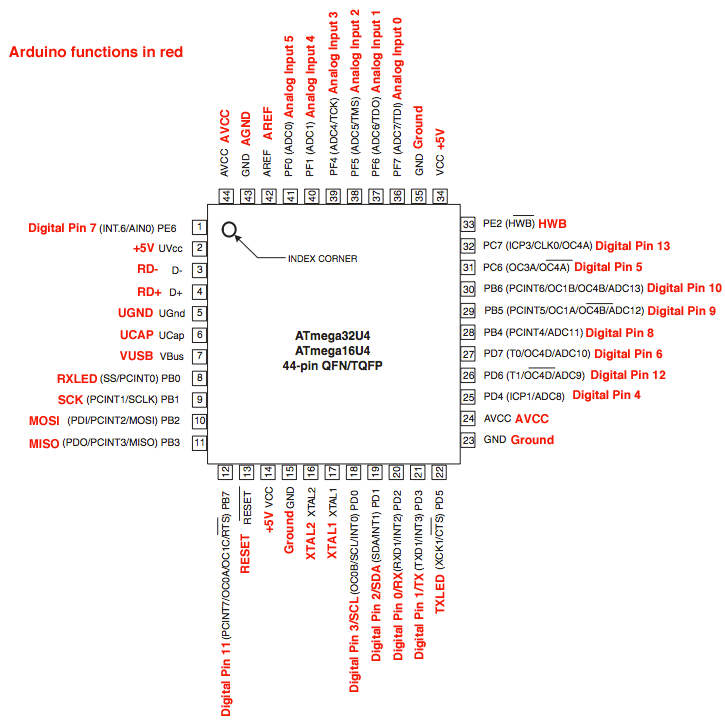Depending on the application sometimes you need to read and write from pins very fast and with consistent timing, for example, when doing infrared reception and transmission. The incorporated digitalWrite() and digitalRead() are relatively slow and have variable latency ranging from a few microseconds to tens of them. Lucky us there's a way to access directly the registers where the values of pins are stored and written, so the latency to perform this operations is minimal and consistent.
Ports and Pin Mapping
 |
| Pin mapping of an Arduino Leonardo (AtMega 32U4) |
Each port has three 8-bit registers DDRx, PORTx and PINx where x is B, C or D:
- DDRx - The Port x Data Direction Register - each bit tells if that pin is input or output.PORTx - The Port x Data Register - read and write values of pins.PINx - The Port x Input Pins Register - read only values of pins.
- To change the mode of digital pin 5 without altering other pins:
DDRC = DDRC | B01000000;
//INPUT mode on digital pin 5 (6th bit of port C)
DDRC = DDRC & B10111111;
! Careful if you are using TX and RX pins because this method could change the mode of those pins without you knowing (depending on the port they are in) and render them unuseful.
- To change the output value of digital pin 5, without changing the value of other pins:
PORTC = PORTC | B01000000;
//Output LOW on digital pin 5 (6th bit of port C)
PORTC = PORTC & B10111111;
- Finally, to check the input value on digital pin 5:
value = PINC & (1 << pin_number);
More information here: https://www.arduino.cc/en/Reference/PortManipulation